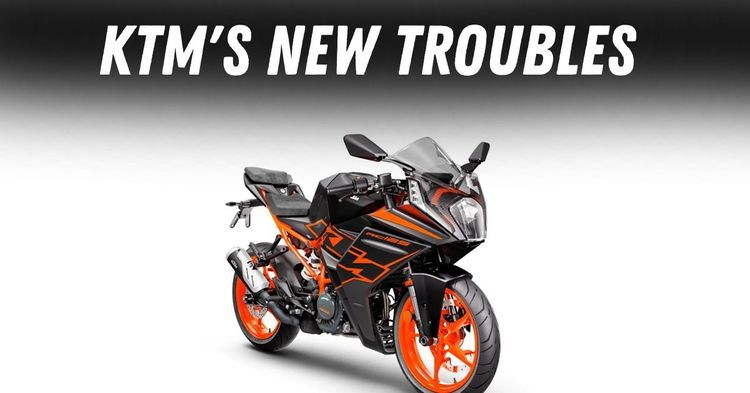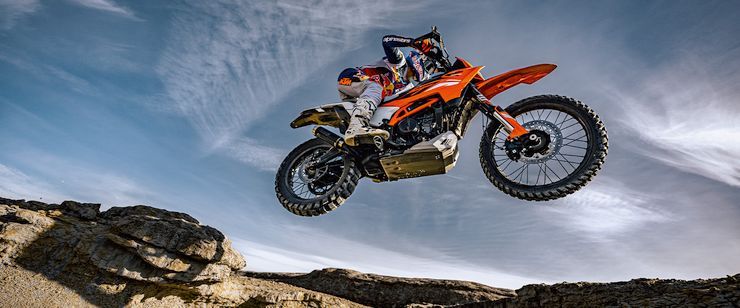KTM's Investors Want Money Back, And It's Because Of Bajaj: We Explain!


KTM, Austria’s iconic motorcycle brand, has been teetering on the edge of financial collapse since late 2024. Once Europe’s largest motorcycle manufacturer, its troubles began with pandemic-era inventory pile-ups and a debt spiral exceeding €1.8 billion. But the crisis deepened in May 2025 when a bitter legal feud erupted between Stefan Pierer, KTM’s long-time CEO, and Stephan Zöchling, a board member and restructuring expert Pierer himself appointed. At the heart of the clash? An €80 million loan and allegations that Pierer hid critical details about Bajaj Auto’s growing influence, says RideApart.

In October 2024, Zöchling’s Dabepo Holding AG loaned €80 million to Pierer Konzerngesellschaft mbH, a holding company controlled by Pierer. The deal involved pledging KTM shares as collateral, with repayment due by June 2025. But Zöchling claims Pierer violated terms by not disclosing pre-emption rights tied to Bajaj Auto, KTM’s Indian strategic partner. This omission, he argues, invalidated the agreement and triggered demands for immediate repayment-a move that threatens KTM’s already fragile restructuring plans.
The loan dispute has exposed deeper fissures. Pierer, who controls 60% of KTM’s parent company Pierer Mobility AG, reportedly sidelined the board while negotiating financial lifelines with Bajaj. Industry observers note that such opacity is unusual for a publicly traded firm, especially one navigating bankruptcy risks. The timing couldn’t be worse-KTM’s survival hinges on repaying €548 million to creditors by 23 May 2025.
Bajaj Auto, which owns 49.9% of Pierer Mobility AG, has been KTM’s lifeline. In February 2025, it approved a €150 million infusion to keep production lines running. But sources reveal Bajaj’s stake could rise further as part of debt-resolution efforts. Crucially, Pierer allegedly failed to inform the board about Bajaj’s expanded financial commitments, including a €200 million loan converted into equity. This lack of transparency angered investors like Zöchling, who saw their collateral’s value erode as Bajaj’s influence grew.
The Indian automaker’s strategy appears twofold: protect its access to KTM’s premium motorcycle technology and secure a stronger foothold in European markets. However, Rajiv Bajaj, managing director of Bajaj Auto, has publicly downplayed takeover ambitions, insisting the partnership remains “balanced.” Yet, with KTM’s shares trading at historic lows, Bajaj could effectively control the company without a formal majority by absorbing distressed debt.
KTM’s restructuring plan, approved in March 2025, requires fresh capital to stabilise operations. While Bajaj has pledged support, the company’s inability to secure an additional €150 million through share sales has left a gaping hole. Creditors, already nursing a 70% haircut, are growing impatient. The internal feud has further spooked potential investors, with private equity giants like Apollo Global and BlackRock hesitating to commit.
Production in Austria remains stop-start, with workers facing intermittent furloughs. In contrast, KTM’s Indian operations-managed independently by Bajaj-continue smoothly, producing bikes like the 390 Duke for global markets. This asymmetry fuels resentment among European stakeholders, who accuse Pierer of prioritising Bajaj’s interests over KTM’s legacy.
The partnership, dating back to 2007, gives Bajaj access to premium motorcycle technology and European distribution networks. For KTM, it’s a gateway to cost-effective manufacturing and emerging markets. But this interdependence now tilts overwhelmingly in Bajaj’s favour. Austrian labour laws and KTM’s cultural identity as a European brand complicate a full takeover, yet Bajaj’s financial leverage is undeniable.
Industry analysts suggest Bajaj could replicate the Tata-Jaguar Land Rover model-retaining KTM’s operational independence while steering long-term strategy. However, this requires stabilising Pierer Mobility’s finances first. If the 23 May deadline passes without a resolution, bankruptcy proceedings could force asset sales, allowing Bajaj to acquire key technologies or factories at bargain prices.

The immediate focus is securing €600 million by 23 May to avoid bankruptcy. If Bajaj steps in fully, KTM could emulate brands like Jaguar Land Rover-European marques under Indian ownership but retaining operational independence. However, shuttering Austrian factories or mass layoffs might trigger regulatory hurdles and brand erosion.
Pierer’s legacy hangs in the balance. Once celebrated for rescuing KTM from bankruptcy in the 1990s, he now faces accusations of mismanagement and unilateral decision-making. Zöchling’s lawsuit, demanding immediate loan repayment, could force Pierer to liquidate personal assets or cede control of his holding company.
For now, KTM’s fate rests on two variables: whether Pierer and Zöchling settle their feud, and whether Bajaj is willing to write another cheque. With the clock ticking, the boardroom battle has become a high-stakes game of survival-one where Bajaj, quietly but decisively, holds most of the cards.
The coming weeks will test whether KTM can navigate this financial storm or if Bajaj’s gradual ascent marks a new chapter for the Austrian brand. How Indian ownership reshapes KTM’s identity-and its motorcycles-remains an open question.